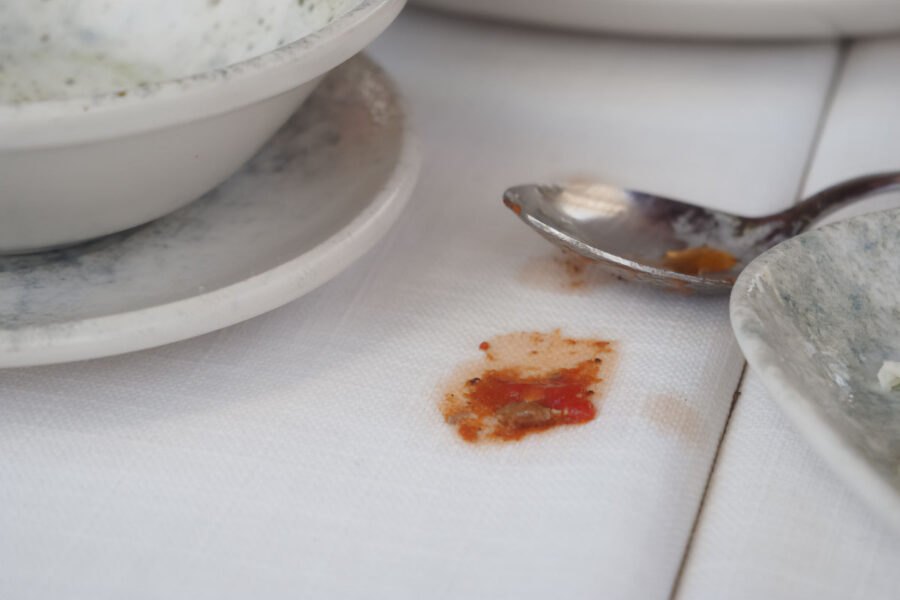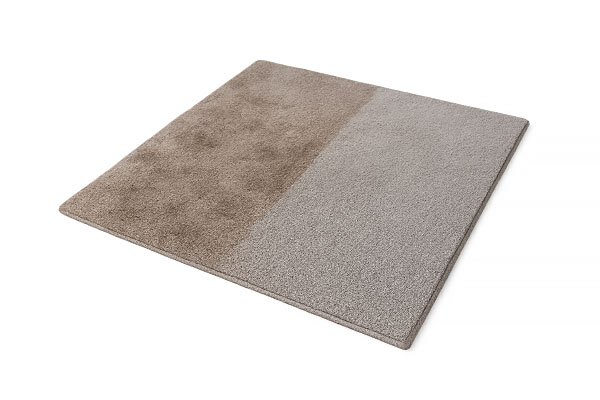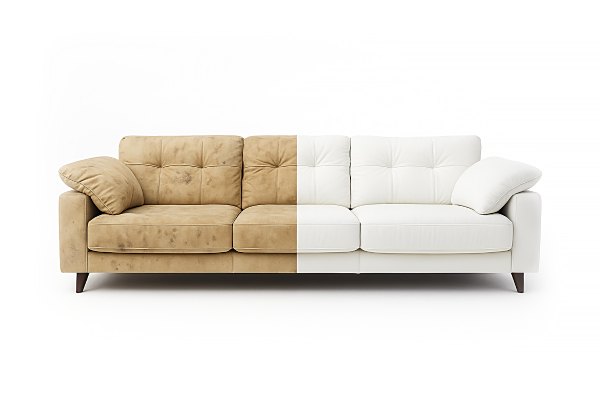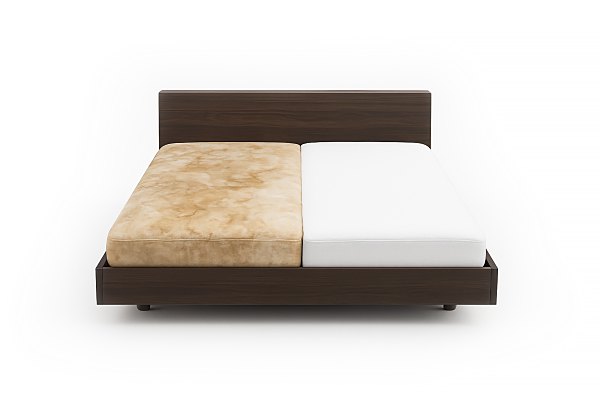Tomato-based stains present unique challenges for furniture owners across Australia. These vibrant red marks from sauces, ketchup, and dips can transform pristine upholstery into unsightly reminders of dining mishaps. The acidic nature of tomatoes combined with various additives creates stubborn stains. These penetrate fabric fibres quickly and bond with upholstery materials.
Many household accidents involve tomato products during family meals or entertaining guests. Children spill pasta sauce during dinner. Adults accidentally knock over dip bowls during parties. These moments create immediate panic as homeowners watch red stains spread across expensive furniture. Understanding proper stain removal techniques prevents permanent damage and extends furniture lifespan. Quick action and appropriate methods restore upholstery to its original condition.
The chemistry behind tomato stains and why they’re particularly troublesome on upholstery
Tomato stains contain complex chemical compounds that make removal challenging. The primary culprit is lycopene, a carotenoid pigment responsible for tomatoes’ red colour. This compound binds strongly to fabric fibres, creating persistent stains that resist simple water treatment.
Understanding lycopene properties
Lycopene molecules attach to synthetic and natural fibres through molecular bonding. The pigment’s structure allows it to penetrate deeply into fabric weaves. Once embedded, lycopene resists water-based cleaning attempts. Heat actually sets these stains permanently by strengthening molecular bonds. This explains why hot water worsens tomato stains instead of removing them.
Fabric type influences stain penetration rates significantly. Cotton and linen absorb tomato compounds rapidly due to their porous nature. Synthetic materials like polyester provide some resistance but still absorb pigments. Wool reacts poorly to acidic tomato compounds, potentially causing colour changes beyond the stain itself.
Acidic content effects
Tomatoes naturally contain citric and malic acids with pH levels around 4.0. These acids interact with fabric dyes and fibres in unexpected ways. The acidic environment helps tomato pigments bond more strongly with upholstery materials. Some fabrics experience colour bleeding when exposed to tomato acids. Others develop weakened fibres that tear during cleaning attempts.
Modern processed tomato products contain additional compounds that complicate stain removal. Vinegar in ketchup increases acidity levels. Sugar content creates sticky residues that attract dirt. Preservatives and thickening agents form protective barriers around pigment molecules. These additions transform simple tomato stains into complex cleaning challenges.
Heat activation factors
Temperature plays a crucial role in tomato stain formation and removal. Fresh spills remain relatively easy to treat before heat exposure. Sunlight streaming through windows can set stains within hours. Central heating and air conditioning create temperature fluctuations that worsen stain bonding. Even body heat from sitting on stained cushions accelerates the setting process.
Cold temperatures slow down molecular bonding between pigments and fibres. This creates a window of opportunity for successful stain removal. Understanding temperature effects helps determine appropriate cleaning strategies. Professional cleaners often use controlled temperature techniques to break existing bonds without causing fabric damage.
Essential household items you may already have that work well on tomato-based stains
Common household products often provide effective solutions for fresh tomato stains. These readily available items work through different mechanisms to break down pigments and acids. Understanding how each product functions helps select the most appropriate treatment method.
White vinegar applications
White vinegar neutralises tomato acids while breaking down pigment bonds. Its acetic acid content counteracts the alkaline environment that sets stains. Mix equal parts white vinegar and cold water for basic stain treatment. Apply this solution immediately after spill discovery for best results.
Vinegar cleaning supplies
- White vinegar (5% acidity)
- Cold water
- Clean microfibre cloths
- Spray bottles for application
- Absorbent towels for blotting
The acidic nature of vinegar helps dissolve sugar residues from processed tomato products. This prevents sticky buildup that attracts additional dirt and grime. Vinegar also possesses natural antibacterial properties that prevent odour development. Always test vinegar solutions on hidden areas first to check for colour fastness.
Liquid dish soap effectiveness
Quality liquid dish soap cuts through oily components in tomato-based products. Many sauces contain oils that help stains penetrate fabric fibres. Dish soap breaks down these oils, allowing pigments to release more easily. Choose clear, uncoloured varieties to avoid introducing new stains.
Create cleaning solutions using one tablespoon of dish soap per cup of cold water. Work from stain edges toward the centre to prevent spreading. Gentle agitation with soft brushes helps soap penetrate fabric weaves. Rinse thoroughly with cold water to remove soap residues that could attract dirt.
Pro tip: Mix dish soap with white vinegar for enhanced cleaning power against stubborn tomato stains.
Step-by-step emergency treatment for fresh tomato sauce spills on different fabric types
Immediate response determines stain removal success rates significantly. Fresh spills require different approaches based on fabric composition and spill characteristics. Quick action prevents permanent staining and reduces cleaning time requirements.
Natural fabric treatment methods
Cotton and linen upholstery demand gentle yet effective cleaning approaches. These natural fibres absorb liquids rapidly but respond well to proper treatment techniques. Begin by removing excess sauce using clean spoons or dull knives. Avoid rubbing or pressing, which pushes stains deeper into fibres.
Blot remaining moisture using clean white cloths or paper towels. Press firmly without scrubbing motions to absorb liquid without spreading. Change absorbent materials frequently to prevent redistributing sauce across clean areas. Work systematically from stain edges inward to contain the affected area.
Apply cold water rinse immediately after blotting excess material. Use spray bottles or damp cloths to rinse without oversaturating upholstery. Remove rinse water using fresh absorbent materials. Repeat rinsing cycles until water runs clear from the treated area.
Synthetic fabric approaches
Polyester and microfibre upholstery resist stains better than natural fabrics. However, synthetic materials require specific cleaning techniques to avoid damage. Heat damages synthetic fibres permanently, so use only cold water throughout the process.
Synthetic cleaning steps
- Remove excess sauce immediately
- Blot with absorbent materials
- Apply cold water rinse
- Use gentle cleaning solutions
- Air dry completely
Synthetic fabrics often benefit from enzyme-based cleaning products. These break down protein and carbohydrate components in tomato sauces. Apply enzyme cleaners according to manufacturer instructions. Allow sufficient contact time for chemical reactions to occur. Rinse thoroughly to remove enzyme residues.
Leather and faux leather considerations
Leather upholstery requires specialised treatment approaches due to its unique properties. Real leather absorbs stains quickly but can be damaged by excessive moisture. Faux leather resists absorption but can be stained by prolonged contact with acidic substances.
Remove sauce immediately using clean, dry cloths. Avoid water-based treatments initially as excessive moisture damages leather finishes. Use specialised leather cleaning products designed for food stains. Apply small amounts to test areas first to check compatibility. Follow with appropriate leather conditioning treatments to prevent cracking.
Pro tip: Keep leather cleaning wipes readily available for immediate spill response on leather upholstery.
Advanced techniques for tackling dried and set-in ketchup stains on upholstered furniture
Dried tomato stains require more aggressive treatment methods to break established chemical bonds. Time allows pigments to penetrate deeply into fabric structures. Successfully removing set-in stains often requires multiple treatment cycles and patience.
Enzyme treatment protocols
Enzyme cleaners break down protein and carbohydrate molecules in dried tomato products. These biological catalysts work slowly but effectively on stubborn stains. Choose enzyme products specifically designed for protein-based stains. Apply generously to affected areas and allow extended contact time.
Create paste-like applications by mixing enzyme powder with small amounts of cold water. This concentrated approach provides intensive treatment for heavily stained areas. Cover treated areas with plastic wrap to prevent drying during treatment periods. Extended contact times up to 24 hours may be necessary for severely set stains.
Advanced enzyme application
- Mix enzyme powder with cold water
- Create thick paste consistency
- Apply liberally to stained areas
- Cover with plastic wrap
- Allow 12-24 hour contact time
- Rinse thoroughly with cold water
Monitor fabric conditions during extended treatments to prevent damage. Some delicate fabrics cannot withstand prolonged enzyme exposure. Test treatments on inconspicuous areas before applying to visible stain locations.
Hydrogen peroxide methods
Hydrogen peroxide breaks down organic compounds through oxidation reactions. This chemical approach works well on set-in tomato stains that resist other treatments. Use 3% hydrogen peroxide solutions to avoid fabric bleaching or damage.
Apply hydrogen peroxide directly to stained areas using cotton swabs or small brushes. Watch for bubbling reactions that indicate active stain breakdown. Allow 10-15 minutes contact time for chemical reactions to complete. Rinse immediately with cold water to neutralise remaining peroxide.
Combine hydrogen peroxide with baking soda for enhanced cleaning power. This creates an alkaline paste that neutralises tomato acids while oxidising pigments. Apply paste mixtures and allow 30 minutes processing time. Remove residues thoroughly to prevent fabric discolouration.
Steam treatment applications
Professional-grade steam cleaners break down stubborn stains through heat and moisture combination. The controlled heat softens set pigments while moisture helps dissolution. Use steam equipment designed for upholstery cleaning to avoid over-wetting fabric.
Apply steam in short bursts to prevent fabric damage from excessive heat. Move equipment continuously to distribute heat evenly across stained areas. Extract loosened residues immediately using vacuum attachments. Multiple steam cycles may be required for heavily stained upholstery.
Pro tip: Rent professional steam cleaning equipment for treating multiple stained items or large affected areas.
When to use DIY cleaning methods versus calling professional upholstery cleaners
Determining appropriate cleaning approaches depends on stain severity, fabric type, and furniture value. Some situations require professional intervention to prevent permanent damage. Understanding these boundaries helps make informed decisions about cleaning strategies.
DIY method limitations
Home cleaning methods work effectively for fresh spills and minor stains. However, certain conditions exceed DIY capabilities and require professional expertise. Set-in stains covering large areas often resist home treatment attempts. Delicate fabrics risk damage from inexperienced cleaning efforts.
DIY success indicators
- Fresh spills (under 24 hours)
- Small affected areas
- Common fabric types
- Basic stain composition
- Available cleaning time
Repeated DIY failures can worsen stain conditions by setting pigments deeper. Each unsuccessful attempt increases professional cleaning costs later. Recognise DIY limitations early to prevent additional damage and expenses.
Professional intervention criteria
Professional cleaners possess specialised equipment and expertise for challenging stain situations. They understand fabric properties and appropriate treatment chemicals better than typical homeowners. Professional services become necessary when stains cover extensive areas or involve expensive furniture pieces.
Antique or heirloom furniture requires professional assessment to prevent irreversible damage. These pieces often feature delicate fabrics or unique construction methods. Insurance coverage may require professional cleaning documentation for damage claims. Investment-grade furniture justifies professional treatment costs through preservation value.
Professional cleaners guarantee their work and carry insurance for potential damage. This protection provides peace of mind for expensive upholstery cleaning projects. They also access commercial-grade cleaning products unavailable to consumers. These professional formulations often achieve results impossible with household products.
Pro tip: Obtain quotes from multiple professional cleaners to compare services and pricing before making decisions.
Professional furniture upholstery cleaning services in Sydney provided by SevenClean
SevenClean operates as Sydney’s trusted cleaning specialist, delivering expert services for various furniture types. The company specialises in professional, safe, and thorough cleaning services for upholstery, mattresses, sofas, carpets, and rugs. Their comprehensive approach addresses both residential and commercial cleaning requirements throughout the Sydney metropolitan area.
Upholstery cleaning expertise
SevenClean’s upholstery cleaning services extend furniture life and restore original beauty to stained pieces. Their technicians understand different fabric properties and select appropriate cleaning methods accordingly. The company’s professional approach ensures safe treatment for valuable furniture investments while achieving superior cleaning results.
Professional cleaning services include pre-treatment assessment, stain identification, and customised cleaning protocols. SevenClean’s equipment reaches deeper into fabric fibres than household methods allow. Their cleaning solutions are specially formulated for different upholstery types and stain compositions. Post-cleaning protection treatments help prevent future staining and extend cleaning intervals.
The company maintains strict quality control standards throughout their cleaning processes. Technicians receive regular training updates on new cleaning techniques and equipment operation. Customer satisfaction guarantees back their service commitments. This professional approach distinguishes SevenClean from general cleaning services operating in Sydney.
Additional cleaning services available
SevenClean provides comprehensive cleaning solutions beyond upholstery treatment. Their mattress cleaning services address hygiene concerns and extend bedding lifespan significantly. Professional mattress cleaning removes allergens, dust mites, and deep-seated stains that affect sleep quality and health.
SevenClean service portfolio
- Professional upholstery cleaning
- Expert mattress sanitisation
- Carpet and rug restoration
- Sofa deep cleaning treatments
- Stain removal specialists
Carpet and rug cleaning services complement upholstery work for complete room restoration. SevenClean’s technicians coordinate multiple cleaning services to minimise disruption while maximising results. Their scheduling flexibility accommodates residential and commercial client requirements. Equipment transportation and setup are included in service pricing.
The company’s reputation reflects years of successful stain removal and fabric restoration projects. Customer testimonials highlight their reliability, professionalism, and consistent results. SevenClean’s established presence in Sydney’s cleaning industry provides confidence for property owners requiring expert services.
SevenClean services
Special considerations for delicate fabrics such as velvet, silk, and vintage upholstery
Delicate fabrics require specialised cleaning approaches that differ significantly from standard upholstery treatment. These materials possess unique properties that can be damaged by conventional cleaning methods. Understanding fabric-specific requirements prevents irreversible damage during stain removal attempts.
Velvet fabric characteristics
Velvet’s raised pile structure traps stains deeply while resisting conventional cleaning methods. the fabric’s directional fibres create varying appearances when disturbed during cleaning. Wet cleaning methods can permanently flatten velvet pile, destroying the fabric’s characteristic texture and appearance.
Use dry cleaning solvents specifically designed for velvet fabrics. Apply cleaning solutions sparingly to prevent over-wetting pile fibres. Work in the direction of pile lay to maintain fabric texture. Allow complete drying before assessing cleaning results or applying additional treatments.
Professional dry cleaning often provides the safest approach for valuable velvet upholstery. Home treatments risk permanent texture damage that reduces furniture value significantly. Insurance policies may require professional treatment documentation for coverage eligibility.
Silk upholstery precautions
Silk fibres weaken when exposed to acidic substances like tomato-based stains. Water-based cleaning can cause permanent water marks or shrinkage in silk fabrics. The natural protein structure of silk reacts poorly to enzyme cleaners designed for other fabric types.
Silk cleaning restrictions
- No water-based solutions
- Avoid enzyme treatments
- Prevent heat exposure
- Use pH-neutral cleaners only
- Test all products first
Immediate blotting removes fresh spills without introducing cleaning chemicals. Use clean, dry cloths to absorb liquid without rubbing or spreading stains. Consult silk cleaning specialists for anything beyond basic blotting techniques. Professional assessment prevents costly mistakes with expensive silk upholstery.
Vintage fabric considerations
Antique upholstery often features weakened fibres that cannot withstand modern cleaning methods. Age-related deterioration makes fabrics susceptible to tearing during cleaning attempts. Original dyes may bleed or fade when exposed to cleaning chemicals or excessive moisture.
Historical fabrics require documentation before cleaning attempts for insurance and preservation purposes. Photography records existing conditions and stain locations before treatment begins. This documentation protects against damage claims and helps preserve historical accuracy.
Vintage fabric cleaning requires specialised knowledge of historical textile production methods. Different eras used varying dye types and fabric treatments that react differently to modern cleaning chemicals. Professional textile conservators understand these historical variations and select appropriate treatment methods.
Pro tip: Contact textile conservation professionals for advice on cleaning valuable antique upholstery rather than attempting home treatment methods.
Summary
Removing tomato-based stains from upholstered furniture requires understanding the complex chemistry behind these persistent marks. Lycopene pigments and acidic compounds create stubborn stains that bond strongly with fabric fibres. Success depends on immediate response, appropriate cleaning methods, and fabric-specific techniques. Household items like white vinegar and dish soap provide effective solutions for fresh spills when applied correctly.
Advanced techniques including enzyme treatments and hydrogen peroxide applications tackle set-in stains that resist basic cleaning attempts. However, delicate fabrics like velvet, silk, and vintage upholstery require professional expertise to prevent irreversible damage. Professional services like SevenClean in Sydney possess the specialised equipment and knowledge necessary for challenging stain removal projects. Understanding when to attempt DIY methods versus seeking professional help protects valuable furniture investments while achieving optimal cleaning results.





